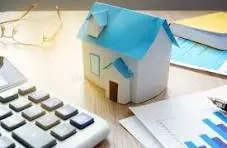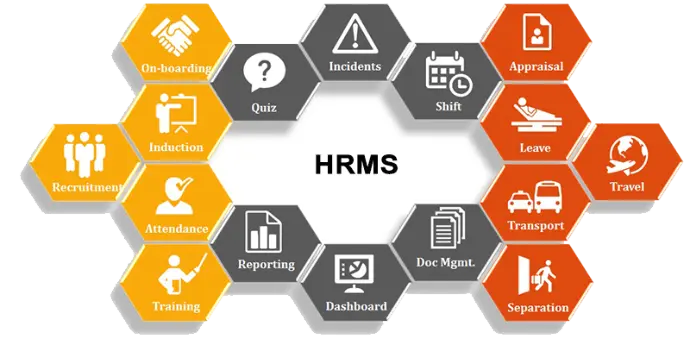Real Estate
Management Platform
A Real Estate Management Software System is a comprehensive solution designed to streamline and automate various tasks involved in managing properties. It offers a centralized platform that enables property managers, landlords, and real estate professionals to efficiently handle their day- to-day operations. One of the key features of this software system is its ability to simplify property listings and tenant management. It allows users to create detailed property profiles with essential information such as location, size, amenities, rental rates, and lease terms. This makes it easier for potential tenants to search for suitable properties based on their specific requirements. Additionally, the software system facilitates efficient tenant screening processes by automating background checks, credit history verification, and rental references. This helps property managers make informed decisions when selecting reliable tenants, reducing the risk of late payments or property damage.
Furthermore, the real estate management software system provides tools for effective lease management. It enables users to generate legally binding lease agreements tailored to specific properties and tenants. The system can also automate rent collection processes by sending automated reminders.

TANENT INFORMATION :-
A tenant info management software system is a comprehensive solution designed to streamline and automate the process of managing tenant information for property owners, landlords, and property management companies. This software system offers a range of features and functionalities that simplify the entire tenant lifecycle, from onboarding to move-out. One key aspect of this software system is its ability to centralize all tenant-related data in one secure and easily accessible location.
It allows users to store and organize essential information such as contact details, lease agreements, payment history, maintenance requests, and communication logs. With this centralized database, property managers can quickly retrieve any necessary information without the hassle of searching through physical files or multiple software platforms.
Another crucial feature of a tenant info management software system is its ability to automate various tasks related to tenant management. For instance, it can generate lease agreements with pre-defined templates based on specific criteria such as rental terms, rent amount, and additional clauses. This automation not only saves time but also ensures accuracy and consistency in documentation.
TANENT AGREMENTS :-
Tenants Agreements Real estate management system is a comprehensive software solution designed to streamline and automate the process of managing tenant agreements in the real estate industry. This system aims to simplify the entire lifecycle of tenant agreements, from initial documentation and signing to ongoing management and renewal. One key feature of this system is its ability to generate standardized and legally compliant tenant agreement templates. These templates can be easily customized based on specific property requirements, lease terms, and local regulations. By automating this process, real estate managers can save significant time and effort in drafting individual agreements for each tenant.
Furthermore, this management system offers a centralized repository for storing all tenant-related documents, such as rental applications, credit checks, background verification reports, and previous lease agreements. This ensures that all necessary information is readily accessible whenever needed, eliminating the hassle of searching through physical files or multiple digital folders. To enhance transparency and efficiency, the system also includes an integrated e-signature functionality. This allows tenants to digitally sign their agreements remotely, eliminating.


PROPERTIES INFORMATION :-
A properties information management software system is a comprehensive solution designed to streamline and optimize the management of various types of properties. This software system offers a centralized platform where property owners, managers, and stakeholders can efficiently store, organize, and access critical information related to their properties. One key aspect of this software system is its ability to handle property details such as ownership information, legal documents, lease agreements, and financial records. By digitizing these documents and storing them in a secure database, the software ensures easy retrieval and eliminates the need for physical paperwork. This not only saves time but also reduces the risk of losing important documents.
Moreover, this software system enables users to track property maintenance schedules, repair requests, and other related tasks. It provides automated reminders for routine inspections or maintenance activities, ensuring that properties are well-maintained and compliant with regulations. Additionally, it allows users to generate reports on property performance metrics like occupancy rates, rental income, expenses, and profitability.Furthermore, this software system often includes features

MAINTENANCE :-
A maintenance management software system is a powerful tool that helps organizations streamline and optimize their maintenance operations. It provides a centralized platform for managing all aspects of maintenance, from scheduling and work order management to asset tracking and inventory control. One of the key benefits of a maintenance management software system is its ability to automate routine tasks. With this system in place, organizations can easily schedule preventive maintenance tasks based on predefined intervals or equipment usage. This proactive approach helps prevent unexpected breakdowns, reduces downtime, and extends the lifespan of assets.
Moreover, the software system enables efficient work order management. Maintenance technicians can receive work orders directly on their mobile devices, eliminating the need for manual paperwork and reducing response times. They can access detailed information about the task at hand, including equipment history, required parts, and step-by-step instructions. This ensures that technicians have all the necessary resources to complete their work effectively. Asset tracking is another crucial feature offered by maintenance management software systems. Organizations can create a comprehensive database of all their assets.
HRMS:
Hrms

ACCOUNTING:
Accounting management software systems have revolutionized the way businesses handle their financial operations. These advanced tools provide a comprehensive solution for managing various accounting tasks, including bookkeeping, invoicing, payroll processing, and financial reporting. One of the key benefits of an accounting management software system is its ability to automate repetitive tasks. By streamlining processes such as data entry and reconciliation, these systems save valuable time and reduce the risk of human error. This automation also allows businesses to allocate their resources more efficiently, enabling employees to focus on more strategic activities that drive growth. Moreover, accounting management software systems offer real-time visibility into a company's financial health. With up-to-date information readily available at their fingertips, business owners and managers can make informed decisions quickly. They can monitor cash flow, track expenses, and analyze profitability effortlessly, gaining valuable insights that help optimize financial performance. Another advantage of these systems is enhanced security. Traditional paper-based accounting methods are susceptible to loss or damage due to accidents or natural disasters.

REPORTS & ANALYSIS :-
A reports and analysis management software system is a powerful tool that enables businesses to streamline their data collection, analysis, and reporting processes. With this system in place, organizations can efficiently gather data from various sources, analyze it using advanced algorithms and statistical models, and generate comprehensive reports that provide valuable insights for decision-making. One of the key benefits of such a software system is its ability to automate repetitive tasks involved in data management. Instead of manually collecting data from different departments or sources, the software can seamlessly integrate with various databases and systems to gather information in real-time. This not only saves time but also reduces the chances of human error, ensuring accurate and reliable data for analysis.
Moreover, the software system provides a wide range of analytical tools and techniques to make sense of the collected data. It can perform complex calculations, generate visualizations such as charts and graphs, and apply statistical models to identify patterns or trends within the data. These analytical capabilities empower businesses to uncover hidden insights that may have otherwise gone unnoticed.
